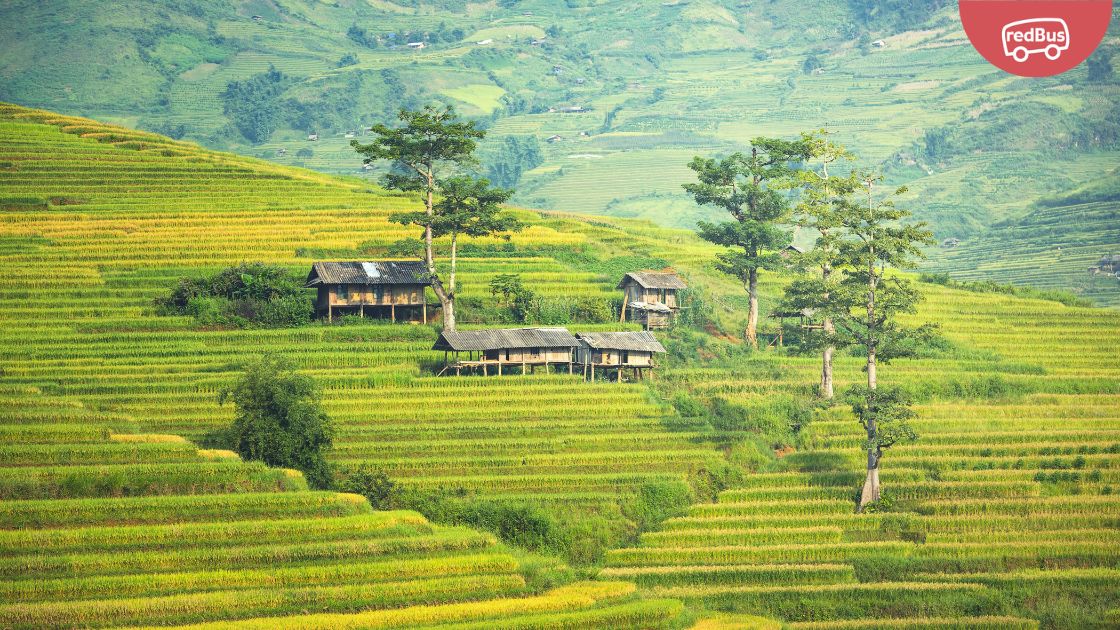Sapa, nestled in the Hoàng Liên Sơn Mountains of Vietnam, is a dream destination for nature lovers and adventure seekers. From trekking through terraced rice fields to exploring unique ethnic minority villages, Sapa offers a truly unforgettable experience.
This blog will be your guide for Sapa tour ideas, covering everything from transportation to must-do activities.
How to Get to Sapa – Step 1 of Your Sapa Tour Plan
Sapa is approximately 370 km northwest of Hanoi. Here are your options for getting there:
- Bus: The most popular and budget-friendly option. Several companies offer sleeper buses from Hanoi to Sapa, taking about 5-7 hours. Prices range from VND 210,000 (US$9) to VND 750,000 (US$32) depending on the amenities offered. You can book popular bus operators for this journey such as Eco Sapa, Inter Bus Lines, and others.
- Train: While not a direct route, there is one train connection for Hanoi to Sapa route. You can catch the train from Hanoi to Lao Cai station, followed by a taxi or bus ride to Sapa (35 km). The train journey takes around 8 hours.
- Motorbike: For the adventurous souls, renting a motorbike allows for flexibility and stunning scenery along the way. This journey takes about 10-12 hours and requires experience and caution.
Ideal Time to Take the Sapa Tour – Best Month to Visit Sapa
Sapa’s beauty unfolds throughout the year, but the best time depends on your desires:
- March to May: Spring paints the mountains with vibrant wildflowers and blossoming fruit trees. Perfect for capturing those Instagram-worthy shots!
- June to August: Escape the summer heat in Hanoi and enjoy pleasant temperatures and fresh seasonal fruits in Sapa.
- September to October: Witness the magic – the rice terraces transform into a golden sea during harvest season. It’s a sight you won’t forget!
- December to February: Embrace the cool mountain air and participate in the unique Snow Festival (snowfall isn’t guaranteed, but the festive atmosphere is!).
Things to do in Sapa – Top Must-Do Adventures in Sapa
Trekking Paradise
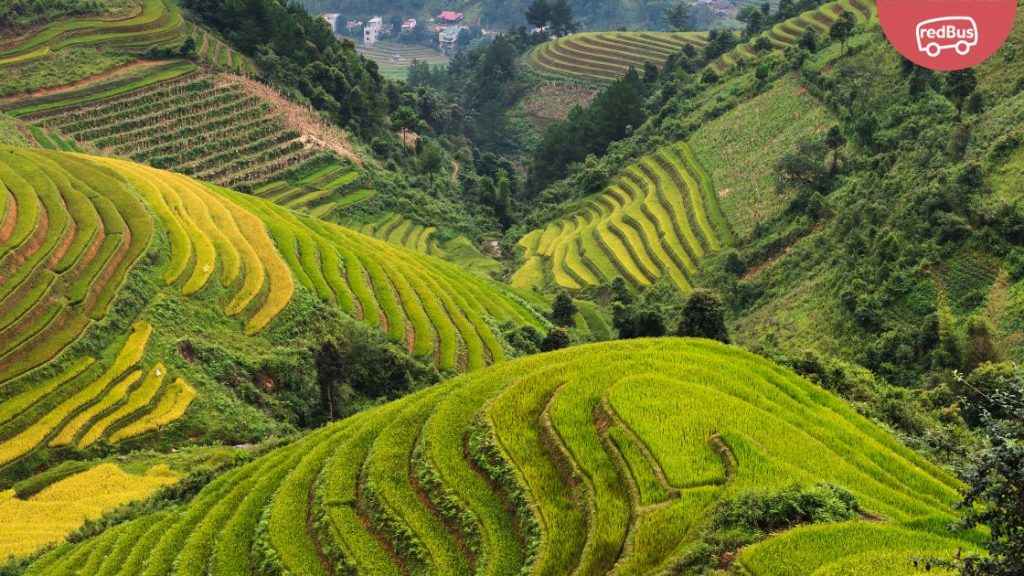
Sapa is a paradise for people who love to go on treks. Your Sapa tour is incomplete without a trek through the villages of Sapa. You can plan the following trekking trails on your Sapa tour –
- Muong Hoa Valley: Hike through this breathtaking valley, carpeted with rice terraces, and discover local villages nestled amidst the mountains. You can also consider a nighttime trek on your Sapa tour. Listen to the nighttime symphony of crickets chirping and frogs croaking, and keep an eye out for nocturnal animals. Remember, this activity is best done with a reputable guide who prioritizes safety.
- Cat Cat Village: This charming village offers a glimpse into the life of the Black Hmong people. Explore their traditional houses, learn about their handicrafts, and maybe even pick up a unique souvenir. Be sure to be respectful of their culture.
- Lao Chai and Ta Van Villages: Embark on a more challenging trek through these villages, offering stunning rice terrace views and a chance to interact with ethnic Tay and Red Dao people.
- Fansipan Challenge: For the truly adventurous, conquer Fansipan, the “Roof of Indochina.” The trek is challenging, but the panoramic views from the summit are simply unbeatable. Read more on Fansipan Mountain Trip
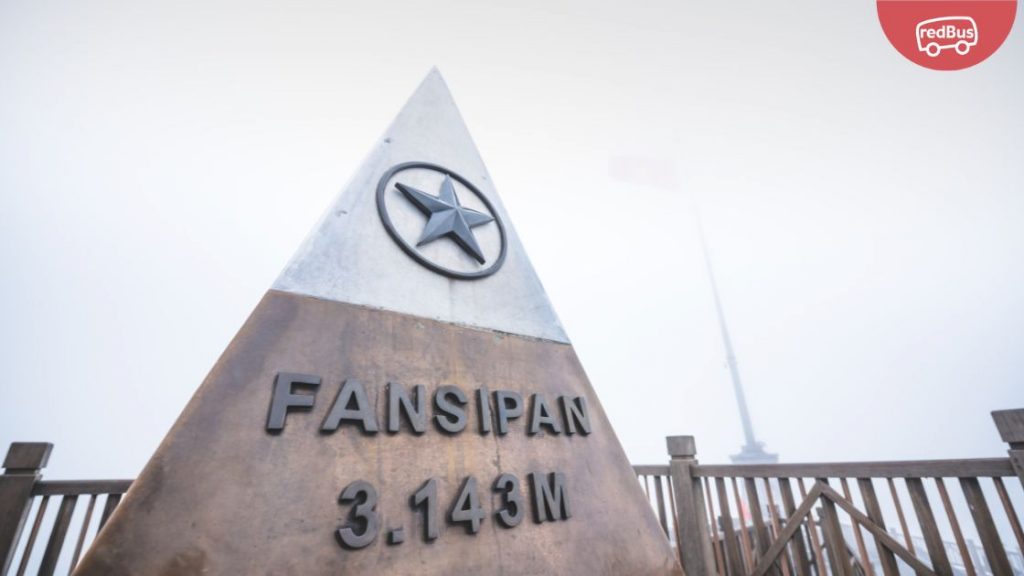
- Cable Car to Fansipan: If trekking isn’t your thing, take the scenic cable car for breathtaking mountain views and a unique alpine experience on Fansipan.
Immerse in the Cultural Delights of Sapa
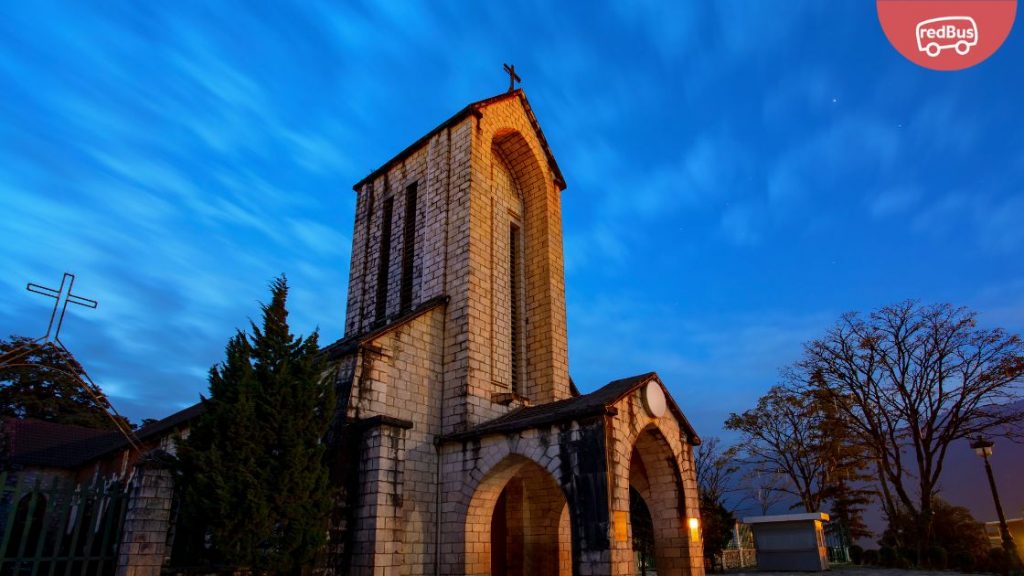
Sapa is a melting pot of ethnicities and you can get a sneak peek with the following –
- Learn at the Sapa Museum: Delve deeper into the history, culture, and traditions of Sapa’s ethnic minorities through exhibits and artifacts at the Sapa Museum.
- Visit the Sapa Stone Church: Admire the beautiful French colonial architecture of this historic church, a landmark in Sapa town.
- Traditional Hmong Music and Dance: Witness the energetic Hmong lion dances, where performers skillfully manipulate costumes to bring mythical creatures to life. Their vibrant clothing and infectious music will have you tapping your feet. Be captivated by the haunting melodies of the “tinh tau” (zither) as the Tay people perform their graceful dances. Feel the rhythm of the drums as the Red Dao people weave intricate patterns, their movements mirroring the cycles of nature. For a truly immersive experience, consider attending a village festival like the Gau Tao or Mid-Autumn Festival. These celebrations feature vibrant parades with traditional costumes, alongside captivating music and dance performances
Embrace the Glory of Nature
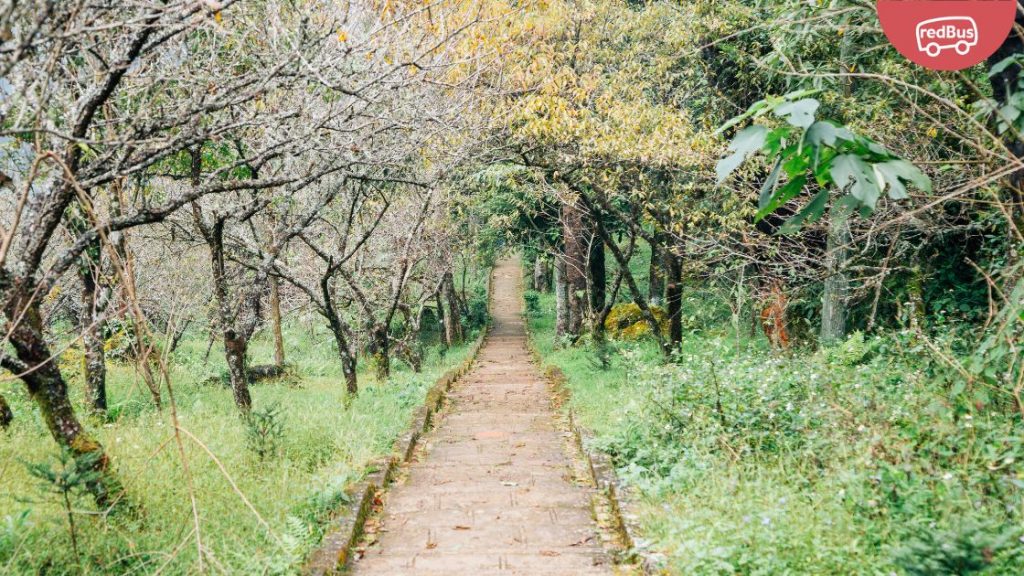
- Explore Ham Rong Mountain: Take a leisurely stroll through flower gardens, discover hidden caves, and be rewarded with panoramic views of Sapa town from Ham Rong Mountain.
- Unwind at Silver Waterfall (Thac Bac): Take a refreshing dip beneath the cascading waters of this scenic waterfall surrounded by lush greenery.
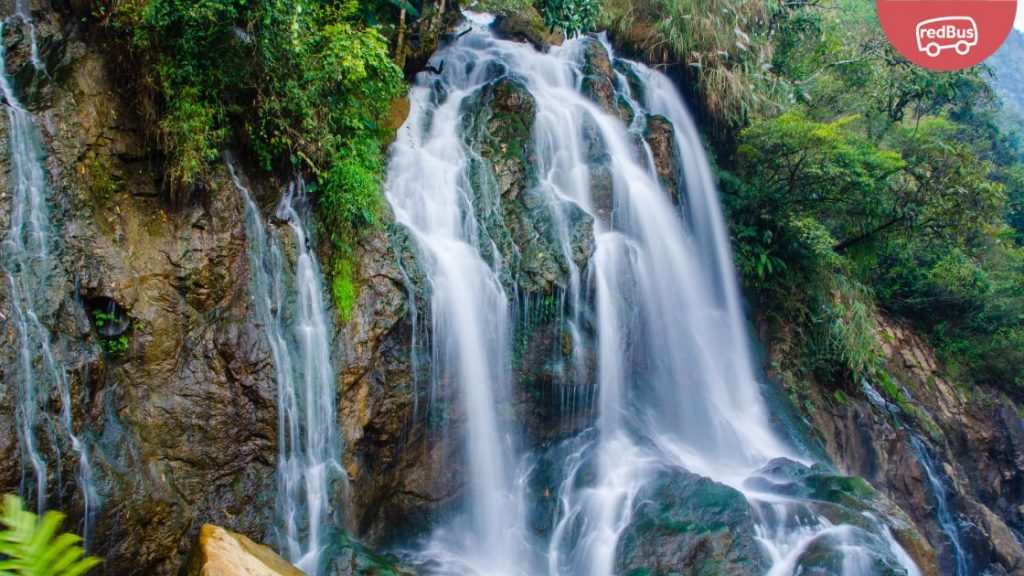
- Love Waterfall Adventure (for the thrill-seekers): Gear up for a canyoning adventure rappelling down Love Waterfall with experienced guides. Get your adrenaline pumping as you navigate the cascading waters!
- Embrace the Mist and Clouds: Sometimes the most magical experiences are unscripted. Wake up early and head to viewpoints like Fansipan, Ham Rong Mountain, or villages like Hang Da to witness the ethereal beauty of Sapa shrouded in mist and clouds. It’s an experience that will stay with you forever.
Sample Local Delicacies of Sapa
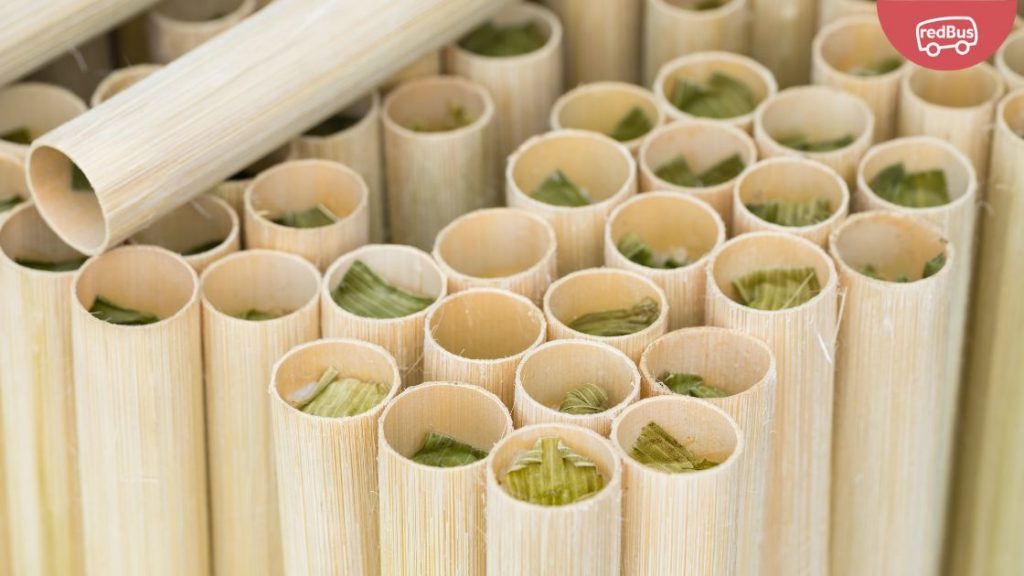
While you might have explored Sapa’s daytime eateries, venture out in the evening for a whole new experience. Head to the Sapa night market, a vibrant hub bustling with local vendors. Sample steaming bowls of “bun bo hue” (spicy beef noodle soup) or indulge in savory “banh mi” (Vietnamese baguettes). Don’t miss “che” (sweet puddings) for a delightful end to your meal. Thang Co, a horse meat hotpot, is a local specialty for the adventurous eaters, or you can opt for a safer bet like Com Lam, fragrant rice cooked in bamboo tubes.
Easy 3 Day Itinerary for a Budget-friendly Sapa Tour
While a quick day trip is possible, spending at least 2-3 days in Sapa is ideal. This allows you to explore the main sights, trek through rice paddies, and immerse yourself in the local culture.
Day 1:
- Take a morning bus from Hanoi to Sapa. You can book your Vietnam bus tickets on redBus and avail discounts on your booking.
- Check in to your hostel/ hotel.
- Explore Sapa town and visit the Sapa Stone Church.
- In the afternoon, trek to the Cat Cat Village (be mindful of entrance fees).
Day 2:
- Embark on a challenging but rewarding trek through the Muong Hoa Valley to Lao Chai and Ta Van villages. Enjoy stunning rice terraces and interact with local villagers.
- Take a dip in the cool waters of Silver Waterfall.
Day 3:
- Visit Ham Rong Mountain for panoramic views and explore the flower gardens and caves.
- Take a motorbike taxi back to Sapa town (negotiate the fare beforehand).
- Enjoy some local delicacies like Thang Co (horse meat hot pot) or Com Lam (bamboo-tube rice) before your departure.
- Take an evening bus back from Sapa to Hanoi
Expense Breakup for Economical Sapa Tour – How Much Does It Cost to go to Sapa ?
Transportation: Bus travel and bike rides are the ideal way to explore Sapa on a budget.
- Hanoi to Sapa bus (one way): VND 210,000 – VND 750,000 ($9 – $32) Roundtrip: VND 420,000 – VND 1,500,000 ($18 – $64)
- Motorbike taxi (within Sapa town): VND 30,000 – VND 50,000 ($1.30 – $2.20) per ride (negotiate beforehand)
Accommodation: Prefer booking hostels or homestays to save more on your Sapa trip
- Hostel dorm bed: VND 100,000 – VND 200,000 ($4.30 – $8.70) per night
Food:
- Meals: VND 100,000 – VND 200,000 ($4.30 – $8.70) per day
Activities:
Several activities and guided tours are chargeable. However, the views will be so breathtaking, that it will be all worth the while. We have listed the approximate charges for some activities –
- Entrance fees (Cat Cat Village, etc.): VND 35,000 – VND 80,000 ($1.50 – $3.50) per person per location
- Trekking tours (vary depending on length and guide): VND 200,000 – VND 500,000 ($8.70 – $21.70) per person per day (Consider including homestays with meals in the trek for a more immersive experience)
- Cable car to Fansipan : VND 750,000 – VND 950,000 ($32 – $41) per person (roundtrip)
- Cultural performances: VND 50,000 – VND 100,000 ($2.20 – $4.30) per person
- Hot springs : VND 100,000 – VND 200,000 ($4.30 – $8.70) per person
Other Expenses:
- Souvenirs: VND 50,000 – VND ($2.20 – ) (Prices vary greatly)
- Travel insurance (highly recommended): Depends on your policy
Estimated Total (3 days):
- Budget-friendly option (excluding cable car and hot springs): VND 3,200,000 – VND 5,500,000 ($140 – $240)
- Mid-range option (including some splurges): VND 4,500,000 – VND 7,000,000 ($200 – $300)
Tips for Saving Money on your Sapa Trip
- Travel during the shoulder seasons (March-May, September-November) to avoid peak season prices.
- Choose a hostel dorm bed for the most budget-friendly accommodation.
- Eat at local restaurants and street stalls instead of tourist-oriented ones.
- Consider a homestay experience for a more immersive and potentially cheaper option, especially if meals are included.
- Negotiate prices for motorbike taxis and some souvenir purchases.
- Bring a reusable water bottle to avoid buying bottled water.
- Pack hiking shoes and light rain gear to avoid renting them.
Remember, this is just a starting point. You can tailor your spending to fit your budget and priorities.
Plan your Sapa tour on your own terms and get ready to carry memories of breathtaking landscapes, rich cultures, and the warmth of the Sapa people.
FAQs
Absolutely! Sapa offers a unique blend of natural beauty, rich cultural experiences, and outdoor adventures. From trekking through emerald rice terraces to exploring colorful ethnic minority villages, Sapa caters to diverse interests.
While a quick day trip is possible, spending at least 2-3 days in Sapa is ideal. This allows you to explore the main sights, trek through rice paddies, and immerse yourself in the local culture. For a more in-depth exploration, consider a 4-5 day itinerary.
Sapa’s beauty unfolds throughout the year, but the best time depends on your preferences:
March to May: Spring paints the mountains with vibrant wildflowers, ideal for capturing stunning photos.
June to August: Escape the summer heat in Hanoi and enjoy pleasant temperatures in Sapa.
September to October: Witness the magic of the rice terraces transforming into a golden sea during harvest season.
December to February: Embrace the cool mountain air and participate in the unique Snow Festival (snowfall isn’t guaranteed, but the festive atmosphere is!)
Sapa is renowned for:
– Breathtaking Rice Terraces: These sculpted landscapes are a UNESCO World Heritage Site and a photographer’s paradise.
– Unique Ethnic Minority Cultures: Explore villages like Cat Cat, Lao Chai, and Ta Van, and discover the rich traditions of the Hmong, Tay, and Red Dao people.
– Trekking Paradise: Lace up your boots and embark on unforgettable treks through valleys and mountains, soaking in the stunning scenery.
– Relaxing Atmosphere: Escape the hustle and bustle of city life and unwind amidst the tranquility of the mountains.
Yes you can consider exploring Sapa without any guided tours. Sapa is well-equipped for independent travelers. You can find plenty of information online from blogs like ours to plan your itinerary for budget travels. Public transport is available from Hanoi, and homestays and hotels offer comfortable accommodation.
However, guided tours can be helpful, especially if you want to delve deeper into the local culture or have limited Vietnamese language skills or would like to tread on the adventurous night trekking trails and hikes.
